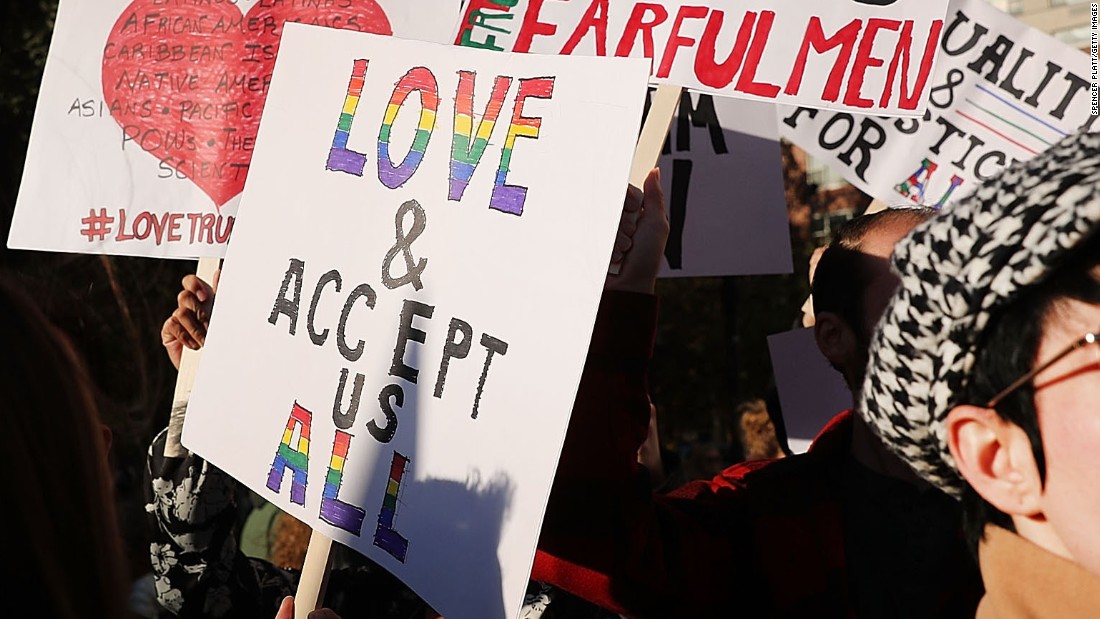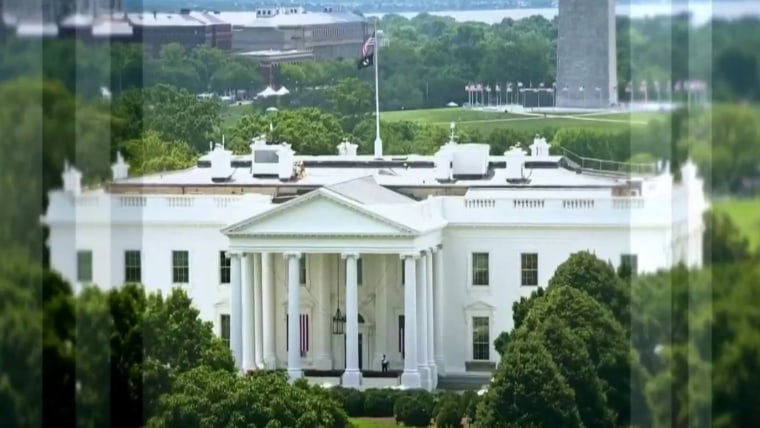US Protests Against Trump: Voices From Across The Nation

Table of Contents
The Breadth and Scope of Anti-Trump Protests
Geographic Distribution
The protests against Trump weren't confined to major metropolitan areas. While cities like New York, Los Angeles, Chicago, and Washington D.C. saw massive demonstrations, smaller towns and rural communities across the country also witnessed significant displays of dissent. This widespread geographic distribution highlights the broad-based opposition to Trump's policies and leadership.
- Women's Marches: Held in hundreds of cities across all 50 states, these marches immediately following the inauguration drew millions of participants.
- Climate Change Protests: Concerned about Trump's withdrawal from the Paris Agreement, climate activists organized numerous demonstrations, from large-scale marches to local community actions.
- Black Lives Matter Protests: The already existing Black Lives Matter movement saw a resurgence and intensification during Trump's presidency, with protests erupting across the country in response to police brutality and racial injustice.
- Anti-Immigration Protests: Trump's immigration policies, particularly the "zero tolerance" policy at the border separating families, sparked widespread outrage and mobilized significant protests.
Social media played a crucial role in organizing these geographically dispersed protests. Platforms like Twitter, Facebook, and Instagram facilitated communication and coordination among activists, enabling the rapid mobilization of large numbers of people across vast distances.
Demographic Diversity of Protesters
The anti-Trump protests were remarkably diverse in their demographic composition. Participants spanned a wide range of ages, races, ethnicities, and political affiliations, united by a shared opposition to certain aspects of the Trump presidency.
- Students: College and high school students played a significant role in many protests, organizing walkouts, marches, and demonstrations on their campuses and in their communities.
- Labor Unions: Labor unions participated actively in protests, voicing concerns about Trump's policies affecting workers' rights, wages, and benefits.
- Religious Groups: Various religious groups, including those advocating for social justice and human rights, organized protests and demonstrations against Trump's policies.
- Environmental Groups: Environmental organizations mobilized significant protests to oppose Trump's environmental deregulation policies.
Despite their demographic differences, these diverse groups found common ground in their opposition to specific policies or a broader concern about the direction of the country under Trump's leadership. This shared sense of concern provided a unifying force across the protests.
Key Issues Fueling Anti-Trump Protests
Policy-Based Protests
Numerous specific policies enacted or proposed by the Trump administration sparked widespread outrage and fueled significant protests.
- Immigration Policies: The "zero tolerance" policy leading to family separations at the border generated intense criticism and large-scale demonstrations.
- Healthcare Reforms: Attempts to repeal and replace the Affordable Care Act (ACA) mobilized significant protests from individuals and groups concerned about losing access to healthcare.
- Environmental Regulations: The Trump administration's rollbacks of environmental regulations triggered protests from environmental activists and concerned citizens.
These policy-based protests often involved detailed displays of activism, with participants highlighting the potential negative consequences of these policies on vulnerable populations and the environment. Data on participation varied widely depending on the specific protest, but the sheer number and geographic spread demonstrate the impact these policies had on public opinion.
Concerns about Democracy and Governance
Beyond specific policies, many protests stemmed from broader concerns about Trump's rhetoric, actions, and perceived threats to democratic institutions.
- Attacks on the Media: Trump's frequent attacks on the press and labeling of news outlets as "fake news" prompted protests defending the importance of a free and independent press.
- Attacks on the Judiciary: Protests erupted in response to Trump's criticisms of judges and the judicial system, highlighting concerns about threats to the rule of law.
- Concerns about Election Integrity: Protests were held following the 2020 election contesting the results, illustrating a deep division in the country regarding faith in democratic processes.
- January 6th Capitol Riot: The January 6th attack on the US Capitol building led to widespread protests condemning the violence and expressing concerns about the fragility of democratic institutions.
These protests underscored a deep-seated concern about the health of American democracy and the preservation of its fundamental principles.
The Impact and Legacy of the Protests
Influence on Public Opinion and Elections
The impact of the US Protests Against Trump on public opinion and subsequent elections is a complex subject requiring further study. While it’s difficult to directly attribute specific electoral outcomes to the protests, they undoubtedly contributed to a heightened awareness of various issues and influenced public discourse.
- Shifts in Public Opinion: Polling data suggests shifts in public opinion on certain issues following major protests, although causality is difficult to definitively establish.
- Electoral Outcomes: While hard to quantify, the protests likely energized voters opposed to Trump's policies and amplified their voices in subsequent elections.
The protests provided a powerful platform for expressing dissent and shaping public narratives.
Long-Term Effects on Political Discourse
The legacy of the anti-Trump protests extends far beyond the end of his presidency. These protests significantly impacted political discourse and activism in the United States.
- Evolution of Protest Methods: The protests witnessed the adoption of new tactics and strategies, showcasing the evolving nature of activism in the digital age.
- Increased Political Engagement: The protests inspired increased political engagement and participation, particularly among younger generations.
- Mobilization of Progressive Movements: The protests played a vital role in mobilizing progressive movements and shaping their agendas.
The impact of these protests on political discourse continues to unfold, and their long-term effects on American politics remain to be fully understood.
Conclusion:
The widespread nature and diverse motivations behind the US protests against Trump represent a significant chapter in American political history. From policy-driven demonstrations to concerns about democratic norms, these protests provided a powerful outlet for dissent and shaped the national conversation. Understanding the scope, key issues, and impact of these US Protests Against Trump is crucial for comprehending the current political landscape and future trajectories of American activism. Further research into the specific localized impacts of these protests, particularly within various communities, would provide a more nuanced understanding of this important historical moment. Continue to explore the legacy of these anti-Trump protests to gain deeper insights into the dynamics of American political engagement.

Featured Posts
-
 Selling Sunset Star Exposes La Landlord Price Gouging After Fires
Apr 22, 2025
Selling Sunset Star Exposes La Landlord Price Gouging After Fires
Apr 22, 2025 -
 Secret Service Ends Probe Into Cocaine Found At White House
Apr 22, 2025
Secret Service Ends Probe Into Cocaine Found At White House
Apr 22, 2025 -
 Signal Chat Leak Hegseths Military Plans Exposed Family Members Included
Apr 22, 2025
Signal Chat Leak Hegseths Military Plans Exposed Family Members Included
Apr 22, 2025 -
 Ai Powered Podcast Creation Transforming Repetitive Scatological Documents
Apr 22, 2025
Ai Powered Podcast Creation Transforming Repetitive Scatological Documents
Apr 22, 2025 -
 Jan 6th Allegations Ray Epps Defamation Case Against Fox News Explained
Apr 22, 2025
Jan 6th Allegations Ray Epps Defamation Case Against Fox News Explained
Apr 22, 2025
